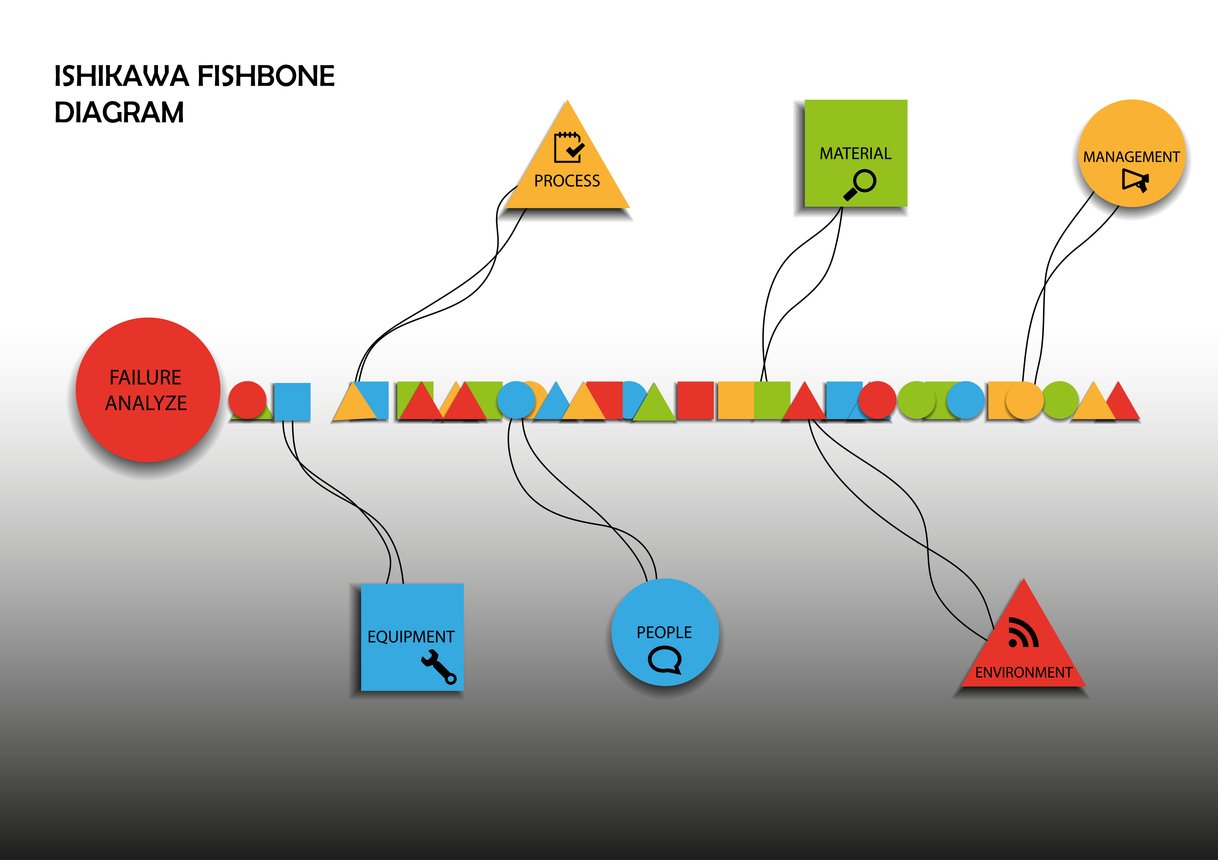You've heard of the Ishikawa Diagram, also known as the Fishbone diagram. It's a powerful tool to help identify and solve problems by exploring all the possible causes of an issue. But did you know that you can also use it to develop new products or improve existing ones?
The Ishikawa diagram allows you to explore all the possible causes of problems with a product and come up with solutions. With it, you'll be able to identify issues with the design, the functionality, and even the marketing of your product.
The Mazda MX5 is a great example of how the Ishikawa diagram can be used to create a successful product. The Mazda team used the diagram to brainstorm ideas and identify potential problems, getting everyone aligned on creating a car loved by drivers worldwide.
The Ishikawa diagram is a tool you need to know if you're looking to develop a new product or improve an existing one. This article will explain how it works and how to use it.
What Is the Ishikawa diagram?

The Ishikawa diagram, also known as the fishbone diagram, is a visualization tool or template that helps you identify the root causes of a problem.
It's named after Dr. Kaoru Ishikawa, who developed it in the 1960s. The diagram is made up of a series of boxes that represent different factors or causes. You can see how each factor links to the others, and it's a great way to brainstorm potential solutions.
As implied by the name, a fishbone diagram represents a fish skeleton. The fish's head represents the core problem. The causes extend out to the skeletal bones. The ribs diverge from the back and represent broader issue categories, while the sub-branches diverge off the ribs and depict causes.
The MX5 was developed using the Ishikawa diagram. Mazda wanted to create a car that was fun to drive and would appeal to a wide range of drivers, so it looked at all the different factors that could affect its design. And they came up with some great ideas as a result.
The beauty of the Ishikawa diagram is that it's versatile — it can be used for any problem, big or small. And it's an excellent tool for brainstorming because it encourages you to think outside the box.
How Mazda Used the Ishikawa diagram
It's interesting how Mazda used the Ishikawa diagram to develop the Mazda MX5.
A diagram is a great tool for identifying potential problems and causes, and Mazda used it to look at all the different aspects of the car. They examined the engine, the chassis, the body, and even the customer experience.
The first step for Takao Kijima and his Mazda CX5 engineering team was admitting that the original Mazda MX-5's appeal to sports car fans and its status as one of Mazda's greatest accomplishments were both a result of the Jinba Ittai philosophy (oneness).
They sought to implement this philosophy through the Japanese Kaizen engineering technique based on continuous improvement.
The team thoroughly evaluated what components of the first- and second-generation Mazda MX-5 cars should be kept and what should be changed for the brand-new Mazda MX-5.
The work was steered toward the desired oneness by the six major categories listed below. They are:
- Cornering
- Driving (everything from ride quality to acceleration response)
- Braking
- Touching (every factor associated with the tactile sense)
- Listening (centered on the engine's timbre but also covering wind effects)
- Styling (interior and exterior).
The diagram helped them to identify the key factors, including cost, weight, and performance. They could then focus on these factors and ensure they were addressed in the car's design. The result was a vehicle that was both affordable and enjoyable to drive!
Using the Ishikawa diagram in your organization
You can use the Ishikawa diagram to help develop your product or service. The diagram provides a way to identify the factors that influence a process and can be used to improve quality, efficiency, and customer satisfaction.
The diagram consists of six main sections:
- Cause: This is the factor you want to change or improve.
- Effect: This is the result of the cause.
- Input: This is the material or information that goes into the process.
- Process: The actual steps taken to produce the effect.
- Output: This is the result of the process.
- Feedback: This is how you measure the output and determine whether it's satisfactory.
Follow these steps as part of the process:
Start by gathering a team of knowledgeable people about the product or service you're trying to improve.
Then, brainstorm potential causes of the problem you're trying to solve.
The brainstorming should begin with all the factors that go into the product.
This could be anything from the customer's needs, to the manufacturing process, to the end product.
Once you have a list of all the factors, you can start sorting them into categories, mapping out how each factor affects the others, and seeing where there might be room for improvement.
With these causes in mind, turn to potential solutions.
Design the specific processes you will follow using the team's input and measure the output. This will help you determine if it's satisfactory or not and reconfigure where necessary.
The Ishikawa diagram is a great tool for sorting all possible solutions and narrowing them down to the best ones. It's a great way to get everyone on the same page and develop an action plan.
Implement the Ishikawa diagram template in your processes today
The Ishikawa and fishbone diagrams are a great way to troubleshoot problems and develop solutions. Mazda used the Ishikawa diagram to develop the MX5, culminating in the huge success we know today.
If you're having trouble developing a new product or solving a problem in your organization, the Ishikawa diagram may be what you need. It's a great way to get started brainstorming and developing solutions.
Download our Ishikawa Diagram template today to start experimenting.


